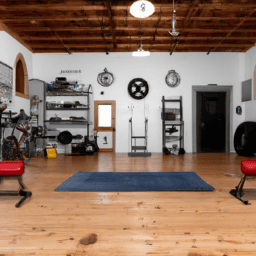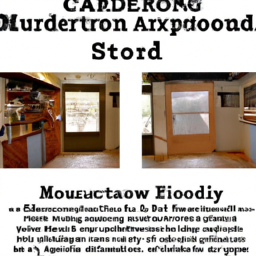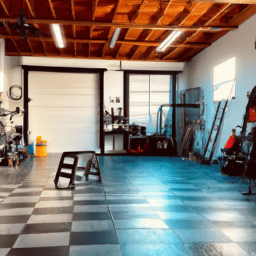Houston Guide: Turning Garages into Guest Suites.

– Understanding the Popularity of Garage Conversions
Houston Guide: Turning Garages into Guest Suites
Do you have an unused garage that’s just sitting there, collecting dust and being underutilized? Maybe it’s time to look at your garage with fresh eyes and imagine the potential it holds. In Houston, a growing trend is the transformation of garages into chic, comfortable guest suites. This article serves as a comprehensive guide to going about this renovation project, addressing everything from the considerations to keep in mind to the potential costs involved.
Why Convert Your Garage Into a Guest Suite?
The question is: Why not? The decision to convert your garage into a guest suite contains multitudes of benefits. Not only it gives you an additional living space, but in cities like Houston where space is a premium, it can significantly increase the value of your home. Moreover, it’s an excellent way to accommodate guests or house aging parents while giving them enough privacy. It can even be rented out for extra income. Instead of leaving your garage a cluttered deposit of seldom-used items, why not transform it into something beautiful, useful, and potentially profitable?
Preliminary Considerations: Legal and Structural Issues
Turning your garage into a living space is a big deal, so before you dive headfirst into this project, there are some preliminary considerations to keep in mind. Firstly, in Houston, as is the case in most cities, there might be legal regulations for converting garages into living spaces. Make sure to check the zoning laws and building codes. You might need permits for everything from plumbing to electricity. So, before the first hammer swings, visit your local planning department and ensure all is legally in check.
Structurally, there are several factors to consider like wiring, ventilation, insulation, and floor height adjustment. Also, you may need to reconsider your garage’s entrance. A roll-up door might not fit the aesthetic of a cozy guest suite.
The Cost Element: How Much Is It Going to Cost Me?
The costs of garage conversions can vary drastically depending on the existing structure, the degree of modification required, and the expected finish level. Here’s a rough breakdown of potential costs:
| Types of Costs | Potential Charge |
| ————— | ————– |
| Full Garage Conversion (with bathroom and kitchen) | $20,000 – $50,000 |
| Basic Room Conversion (No bathroom or kitchen) | $10,000 – $15,000 |
| Extra Costs (permits, higher-grade materials) | Vary |
This estimation is for general understanding and actual costs may vary based on various factors. However, when considering the potential value add to your home, these costs may be well worth it, especially in expensive areas like Houston.
Let’s Get to Work: Steps to Conversion
Once you’ve assessed the legality, functionality, and cost, and decided to go ahead with this promising project, here are basic steps to converting your garage into a guest suite:
- Clearing Out: Remove everything from the garage. It’s time to let go of those items that haven’t seen daylight in a decade.
- Designing: Make a plan of how you want the space to look and function. Are you including a bathroom or kitchen? Where will the windows go?
- Getting Permits: Work out the necessary paperwork. Remember: stay on the right side of the law!
- Foundation and Construction: Start modifying essentials like flooring, walls, roof, and doors. Insulate and ventilate as required.
- Installations: Introduce electricity and plumbing if you’re adding a bathroom or kitchen.
- Finishing Touches: Paint, furnish, decorate and accessorize the room to your liking. Your cozy guest suite is just a few brush strokes away!
Dream Big but Stay Grounded
Transforming your garage into a guest suite can be an exciting project, offering the chance to unlock your home’s potential in terms of space, value, and convenience. However, it’s important to keep in mind the legal and structural considerations, along with the cost involved. Houston, with its flourishing real estate market, stands as a promising city for such projects. Keep this guide handy, and you’ll be well on your way to making this worthwhile investment. Who knows? You might end up creating a space so comfortable, your guests will never want to leave!
Isn’t it time we banished the notion of dusty, unused garages? Let’s embrace their potential and welcome a new dawn of garage guest suites in Houston!
Gulf Remodeling offers residential and commercial remodeling and renovation services. Contact us for a free consultation on your next project.
















